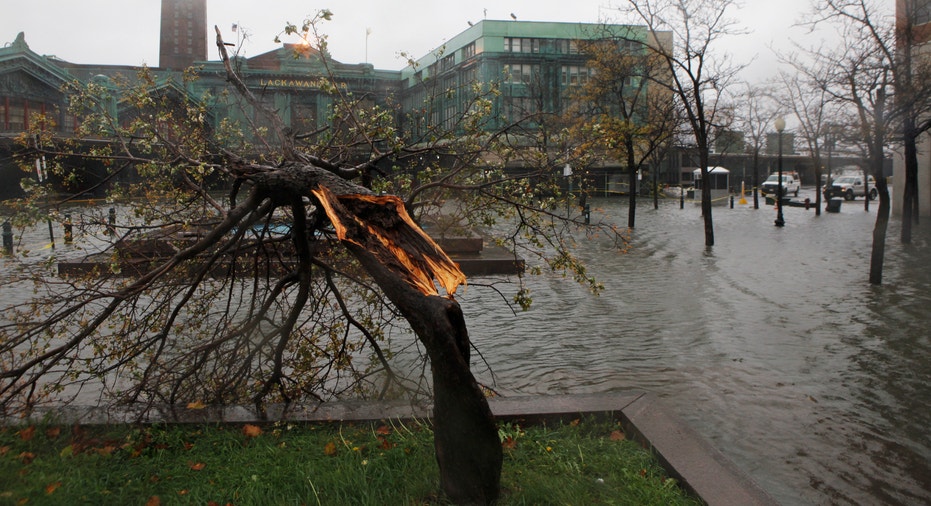Small Businesses and Sandy: Where Do You Go Post-Hurricane?

Along the Point Pleasant, N.J., boardwalk where seasonal businesses once thrived, storefronts and bars have been washed away, surrounded only by piles of splintered wood. Meanwhile, in downtown Manhattan in the once-bustling financial district companies were flooded and remained without power, literally going eerily dark in the days after Hurricane Sandy touched down in the tri-state area.
In an unstable economy, small businesses have little to rely on. However insurance provides some piece of mind for many business owners, acting as a safety net in times of struggle and unforeseen circumstances. However, post-disaster, the lines of coverage are not as clear for businesses that were hit and destroyed by Sandy.
Insurance and Your Business
John Egan, managing editor of InsuranceQuotes.com, said businesses with business interruption insurance, which is a type of coverage that helps cover payroll costs, bills and revenue in the case of an emergency shutdown, may not even be able to recoup their losses. Business Interruption coverage is often coupled with commercial property insurance, and is based on the number of workers you have on payroll and your financial records, among other things.
However, it does not cover flooding, which is a separate insurance category of its own via the National Flood Insurance Program, Egan said.
“It’s not a blank check, and you won’t get business interruption claim payments forever,” he said. “There is generally a waiting period as well, usually about 48 hours until it kicks in. I think a lot of businesses will be surprised that they aren’t covered under existing policies.”
For businesses that close due to Sandy’s flooding, you have to turn to your flood coverage and/or federal disaster relief programs, he said. For context, the Institute of Southern Studies reports Hurricane Katrina destroyed 60% of New Orleans’ small businesses. SCORE, a business counseling group, estimated small businesses represented about 40% of the $20.8 billion in business insurance claimed paid out during that hurricane.
Unemployment for your workers
Once a disaster declaration is made by the President, as has been done in New York, New Jersey and Connecticut, exceptions are typically made that trigger changes to the unemployment insurance system, Diane Pfadenhauer, president of EPA Advisors and human resources expert, said.
The conditions under which you or your employees are unable to work change, because instead of being laid off, for instance, the business just actually no longer exists.
“If you live or work in an area that was declared a disaster area, you will qualify for unemployment insurance,” Pfadenhauer said.
This applies as well to your workers, despite full or part-time employment status, she said. Businesses in these areas can already begin applying to the Federal Emergency Management Agency (FEMA) for assistance.
Unemployment payments will vary state-by-state, however if you or your workers are eligible, you should apply for unemployment payments as soon as possible, as there is often a waiting period for collection, she said.
Businesses are also not required to keep people on the payroll, aside from those who are in contracts, or to offer paid vacation. If the business is gone, you are obligated only to pay workers for the hours they actually worked.
“If the business completely fails, it’s the same rules that apply if you closed the business on your own,” Pfadenhauer said. “How do you pay people when you have no revenue? Some employers will try to be helpful to workers, but a lot of them won’t be able to.”
Rebuilding post-Sandy
FEMA estimates 40% of businesses are unable to rebuild post-disaster. In situations where businesses are so densely populated, like in New York City and the New Jersey shore, Egan said it’s unclear if that stat applies.
“When your business is wiped out completely, it’s that much harder,” he said. “A disaster like this certainly won’t make things better, and there are few scenarios I can imagine that will make you whole.”
Before rebuilding, Egan suggests doing a major analysis of the pros and cons. If you want to reinvest in the business, consider location, among other things. And in an already tight credit market, it is unclear how much funding companies will be able to secure to rebuild and reopen.
“This is why so many businesses just fold post-disaster,” he said. “They can’t handle the financial burden. I think businesses will be reeling for months, if not years, from Sandy.”



















